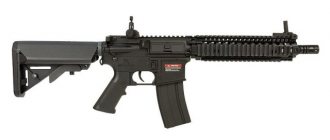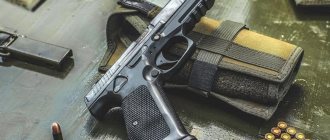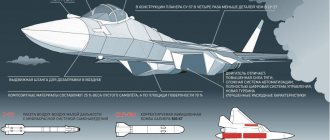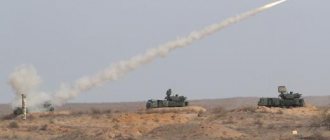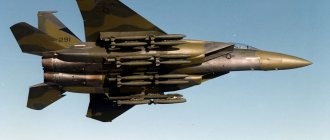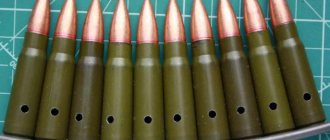The Su-35 Flanker-E+ is a multi-role fighter that belongs to the 4++ generation and is a deep modernization of the Su-27. Some Sukhoi parameters meet the requirements for 5th generation aircraft. The F-35 Lighting is a 5th generation fighter-bomber with high stealth capabilities. A comparison of the F-35 and Su-35 can be made by carefully studying the characteristics of the aircraft.
Comparison of characteristics
There are several modifications of the F-35: ground, vertical and deck. The most popular modification is the F-35A (ground), which was created specifically for the US Air Force and export. The difference between the different modifications lies in the dimensions and technical differences. Fighters have the following distinctive characteristics:
| Characteristic | F-35A | Su-35 |
| Length | 15.57 m | 21.9 m |
| Wingspan | 10.67 m | 14.75 m |
| Height | 4.38 m | 5.9 m |
| Empty mass | 13.171 kg | 19000 kg |
| Maximum speed | 1910 kilometers per hour | 2778 kilometers per hour |
| Cruising speed | 850 kilometers per hour | 1347 kilometers per hour |
| Range of flight | 2200 km | 3600 kg |
| Ceiling | 18200 m | 20000 m |
Based on the characteristics, it can be understood that the Su-35 has large dimensions, which allow it to fly further and faster. The American aircraft is superior to the Russian one only in avionics. The F-35 has a multifunctional radar, as well as high stealth. Stealth allows the aircraft to carry out surprise strikes and avoid detection.
It is worth noting that each aircraft has its own purpose. The F-35 is capable of carrying out its mission under the protection of the heavier and more maneuverable F-22 Raptor, which is also a fifth-generation fighter. If faced with a Su-35 at close range alone, the F-22 will most likely suffer defeat.
Flight characteristics determine combat effectiveness against other fighters. The Su-35's ability to quickly transition from low speeds to supersonic speeds makes it a true hunter.
Armament
The Su-35 can be armed with medium- and short-range air-to-air missiles, air-to-surface missiles and aerial bombs. It has a 30 mm GSh-30-1 cannon. Almost all modern Russian-made developments are available for armament, which makes the Flanker-E a dangerous adversary even for a fifth-generation aircraft.
The F-35 is more of a bomber. It can carry adjustable bombs weighing up to 910 kilograms, air-to-air missiles, cluster bombs, anti-tank missiles and guided bombs. The fighter is also equipped with a 25 mm cannon. If necessary, the F-35 can be equipped with a B61 nuclear bomb.
The Su-35 uses weapons more efficiently. High speed and maneuverability allow you to use weapons with maximum benefit. Missiles of any range are given great kinetic energy.
Avionics
The Su-35 uses the N035 Irbis radar. This radar station has the following characteristics:
- target detection range - 350 km on a collision course;
- simultaneous shelling - no more than 2 targets;
- detection and target designation of 4 ground or 30 air targets.
The F-35 uses the APG-81 radar. It is possible to capture air, ground and surface targets. Detailed characteristics of the radar station are not disclosed. The first combat use of the F-35 took place in 2022.
"Raptor" and "Lightning"
According to open data, the US Air Force operates 195 Lockheed/Boeing F-22 Raptor fighter jets. The aircraft entered service in 2005, its production ended in 2011. Since September 2014, Raptors have been actively used in Syria. Since 2015, F-22s have been included in every group that strikes targets in the Arab Republic.
On December 15, 2022, a “dangerous approach” between a US Air Force F-22 and two Russian Su-25 attack aircraft occurred in Syrian skies. The Pentagon said that in this way the Raptor pilot decided to make a “risky joke” on his Russian colleagues. According to the Russian military, the American fighter tried to provoke the Russian pilots, released “heat traps”, but “retired” as soon as the Russian Su-35 fighter-interceptor appeared on the horizon. The US Air Force command did not confirm this information.
One of the main disadvantages of the Raptor, according to most experts, is its excessively high cost, amounting to more than $300 million per unit. Another fifth-generation fighter, the Lockheed Martin F-35 Lightning II, was introduced into the US Air Force in 2016 and was originally planned as a cheaper aircraft than the F-22. Now the price of one car varies from $83.4 million to $108.1 million, depending on the modification. The Air Force and Navy operate about 210 F-35s. Contracts are being carried out for the supply of fighters to the air forces of Great Britain, Belgium, Israel, Australia, the Netherlands, Denmark, Norway, Italy, Japan, South Korea and Turkey. The F-35 has also already flown combat missions over Afghanistan, Iraq and Syria.
5th generation fighters Lockheed Martin F-35US Navy/Navy Office of Information/Global Look Press
Information about the characteristics of fifth-generation fighters used by the United States and Israel in Iraq, Syria and Afghanistan is still contradictory and fragmentary. The F-35 is considered a breakthrough vehicle: stealth technology, speed, maneuverability, electronic equipment, enemy radar suppression system, weapons - all of this on the F-35 is at a different level compared to the F-15, F-16 and F/A-18 . At the same time, the real effectiveness of the stealth technology implemented in aircraft has not been established. All statements about the ability of American fighters to remain undetected by Russian air defense systems are still purely declarative.
Opinion of the expert community
Expert opinions are mixed. In a direct confrontation with the Su-35, the American aircraft has a 70% chance of losing. The F-35 must be flown by experienced pilots to reap the benefits of the fighter jet. It is worth noting that some experts predict victory for the Su-35 even in a collision with two F-35s at once.
To win the confrontation, Lighting must use all its advantages. You will need to use stealth technology, try to detect it at an early stage, and ask for help if necessary.
Due to problems with combat effectiveness against other aircraft, the F-35 has come under fire. Among the disadvantages of the aircraft is the inability to fly at supersonic speeds without using afterburner.
It is noted that to destroy the Flanker-E+, the American F-35 fighter will need to get as close as possible. At a short distance, the radar of a Russian aircraft can detect the enemy.
It is worth noting that in a conflict, the decisive factors will be not only the characteristics of each individual aircraft, but also the entire fleet. The number of aircraft plays an important role. The United States began operating the fighter in 2016. During this time, more than 300 aircraft were produced. Operation of the Su-35 began in 2014. During this time, approximately 100 units of equipment were produced. In a conflict, a large number of F-35s will be an advantage for the Air Force.
In July 2008, at the US Air Force Base Hickam, located in Hawaii, specialists using computer technology carried out a digital simulation of an air battle between the Su-35 and a number of NATO fighters, incl. and F-35. Four representatives of the Australian Air Force and military intelligence were present at the experiment. After which, Australian MP Denis Jensen announced that the F-35 was “mercilessly beaten by a Su-35 fighter.”
Which fighter is better?
F-35Su-35
Who is stronger - Su-57 with "Dagger" or F-35 without weapons
Two planes are like two worlds: while the Russian Su-57 is armed with a hypersonic missile, the American F-35 cannot pass combat tests due to problems with weapon control
The comparison seems incorrect, which is what the Americans point out in publications about the future fate of two fighters of the same class. After all, less than two dozen T-50 products, called Su-57, were produced. Almost all of them are experimental, or rather experimental. Even in 2022, the Russian Ministry of Defense plans to purchase only a dozen of these newest 5th generation fighters.
At the same time, F-35s are already being built in the hundreds (more than 350 vehicles), they are already being purchased in several countries, they have already been fully mastered, they have even been tested in combat, if the flights of Israeli vehicles over Syria can be called that. There is even commercial success - there is even something like a queue from the military of several countries lined up behind these fighters. What is there to compare?
It turns out that there is something
Even if this comparison is indeed not completely correct, it is very resonant from, so to speak, a satirical point of view.
For it is not here, but in the famous American magazine The National Interest that two wonderful pieces of information came together. In one of them, the publication announced, citing a letter from the Pentagon testing director, that the F-35 Lighting II could not pass final combat tests.
Final. Combat. Despite all the commercial successes.
Another is that the F-35 will soon be “deadlier than ever” because it will introduce new hardware and software with 1,500 modular components, “including new antennas and weapon release systems,” by 2022.
And the satire is that both news comes from one fact: the current fighter software is no good. Because it causes such problems with the weapon control system that the combat vehicle cannot use standard air-to-air missiles, and the shells miss the target when fired.
At the same time, in a report published in January of this year by the head of the Pentagon department for military testing, Robert Behler, it was reported that the share of F-35s ready for combat does not exceed 50%, and this figure has not been significantly increased since October 2014. The remaining half of the planes have "thousands of defects."
F-35. Photo: Michael Fitzsimmons / Shutterstock.com
The second satirical point is that its developers made statements about an imminent software change, after which the F-35 will become “deadlier than ever,” several years ago.
The main problem, it turns out, is the autonomous information and logistics system ALI, which is so autonomous that it simply... does not work without the efforts of the crew and ground staff. But there are others. Thus, due to technical defects, AIM-120 missiles are not always launched correctly, as well as air-to-ground ammunition dropped. F-35B aircraft cannot be refueled in midair. The display in the pilot's helmet shows such incorrect data about the flight and targets that it would be easier to fly without a helmet. Constantinople at one time wrote in detail about these problems. Since then, which was two years ago, it seems that little has changed.
And now The National Interest's well-known "satirist" Chris Osborne enthusiastically writes that the Pentagon and Lockheed are making efforts to "update technologies" of the F-35, designed to improve the stealth fighter's target attack, weapons control, and on-board computing. And all of this, it turns out, "is part of the effort to maintain the F-35's combat effectiveness ahead of its great power rivals." Read: Russia and China. India is still bargaining with Moscow.
The upgrades that will be installed on the planes will improve their computer memory, data storage and processing speed, and video display to create higher-resolution images to help pilots with navigation and target information. Improved radar warning technology will allow you to quickly identify enemy aircraft, and faster processors will allow you to quickly aim and fire your weapon.
At the same time, the developers emphasize that the increase in data processing speed will be “exponential”, since the measurements will be about terabytes, and not about megabits or megabytes.
F-35. Photo: www.globallookpress.com
On the weapons side, the new capability will ultimately enable the F-35 to operate state-of-the-art weapon systems such as the Small Diameter Bomb II and the GBU-54, relying on infrared, millimeter wave and laser guidance. The combination of these sensors allows the weapon to track and eliminate moving targets in all weather conditions.
In general, delight and horror!
But tomorrow
In general, this is the answer to the question posed in the title of the article in the American publication, which in English sounds absolutely luxurious: “Why the F-35 Will Soon Be Deadlier Than Ever.”
True, to this day no one has seen any particular lethality from the F-35. But three accidents occurred this year alone, one of which involved the ejection of the pilot and, accordingly, the crash of the plane. The Israelis managed to save and land one vehicle, allegedly damaged by a bird during a combat mission in Syria.
But this is not the main problem. Unfortunately, airplane accidents happen to everyone. This, as they say, is not a reproach for an honest young man. The problem is that while aircraft developers are feeding the military and the public “breakfast”, at the moment the F-35... is not approved for combat use at all! It turns out they are still being produced and flying “for training purposes”! And it is from this angle that we can compare the two 5th generation aircraft being tested - American and Russian.
First of all, it turns out that the F-35 cannot formally be considered a 5th generation aircraft. It does not have the appropriate speed; not all its weapons are hidden in the fuselage, but hang on pylons. The Su-57 is a pure 5th generation machine, especially with the new engine.
Armed with a hypersonic missile like that used in the Kinzhal complex, the Russian machine can confidently be classified as generation 5+. Due to the fact that he will have weapons that are a generation more advanced than the current American ones. And besides - intra-fuselage. And this will be, it is already included in the current state armaments program for 2018-2027. The appearance of such missiles in the Su-57's arsenal was attributed by the head of the Tactical Missile Weapons Corporation, Boris Obnosov, to the 2020s.
Complex "Dagger". Photo: www.globallookpress.com
Thus, just in the next decade, the F-35 with terribly updated software simply and stupidly will not be able to reach effective fire range against the Su-57. With a missile range of more than two thousand kilometers, when 10 speeds of sound of the missile itself are added to the aircraft’s afterburner speed of Mach 2, and even with course maneuvering, no, the chances are zero. After all, one cannot realistically count on the fact that if the Russians have made (once they included in the weapons plan) a compact intra-fuselage hypersonic missile, they will not be able to make a similar one for the air-to-air class.
It remains to add to this that the Su-57 multirole fighter itself is capable of simultaneously tracking up to 30 targets, including cruise missiles. And no problems with aiming thanks to the distribution of antennas throughout the entire body of the device.
Speed and maneuver? Yes, the F-35 is also inferior to the Su-57 in its acceleration and maneuverability characteristics. It, for example, is capable of asynchronously deflecting the thrust vector of each engine, that is, when one nozzle is directed up and the other down, the machine can also rotate around the longitudinal axis. This provides serious advantages in any engagement with an American aircraft.
Invisibility? The Americans themselves admit: the stealth technologies used on the F-35 are hopelessly inferior to Russian weapons. The UHF radar, against which all the American’s tricks are useless, coupled with the infrared radar makes the American aircraft visible as if on a silver platter.
Well, there is only one thing left to add: these advantages will remain with the Russian aircraft in the next 30-40 years. For this period, experts expect, the operation of the Su-57 in the army will extend. And the F-35 is about the same number.
This means that the superiority of Russian aviation over American aviation is planned for so many years.
Conclusions - which plane is better?
When comparing fighters in a single confrontation against each other, the Su-35 wins. The purpose of the F-35 is bombing and the ability to detect the enemy in advance. This allows the aircraft to counter existing threats with maximum efficiency, calling for reinforcements or retreating if necessary.
It is worth noting that there is demand for both aircraft. After the successful use of the Su-35 in Syria, the number of buyers has increased significantly. The US used Lightning to strike the Taliban in Afghanistan.
It is extremely problematic to definitively say which fighter will be better. It all depends on the conditions of use and the assigned tasks. The Su-35 may be suitable for gaining air superiority, while the F-35 can cope with the bombing of individual elements on the ground. Both aircraft play an important role.
"Black Eagle" PLA Air Force
The Chinese fifth-generation fighter Chengdu J-20 "Black Eagle" first demonstrated its weapons on November 10, 2022 at the Zhuhai Air Show - four long-range air-to-air missiles and two short-range missiles. The combat aircraft made its first test flight in 2011 and six years later was adopted by the PLA Air Force. Most of the J-20's specifications, including price, are kept secret.
Experts noted that the fighter supposedly has a number of design borrowings, including from the American F-22 fighter and the Russian experimental MiG 1.44, which at one time was conceived as a counterweight to the American “twenty-second.” The Americans, in turn, accused Chinese aircraft designers of industrial espionage. The aircraft has a reduced radar signature, a radar with an active phased array antenna, a modern information system, while, obviously, its weak point is the engine: it currently uses a variant of the Russian AL-31, but in the future the aircraft should receive the AL-41 variant. In any case, the PLA Air Force’s “Black Eagle” remains a “dark horse” - it is not known exactly to what extent Chinese aircraft designers implemented American and Russian developments and what the original characteristics of the combat vehicle are.
"Dog Fights"
Direct combat clashes between fifth-generation fighters of the US Air Force, Russia and the People's Republic of China have not yet occurred, and let's hope they will not happen. At the same time, the superiority of the new generation of combat vehicles of one country over another is a subject of speculation, flavored with propaganda.
The Su-57 is definitely superior to its American counterparts in maneuverability. The experimental aircraft of the Sukhoi Design Bureau even demonstrated aerobatics during test maneuvers, while American fifth-generation fighters are deprived of such capabilities. The American F-35 lost training battles to the fourth generation fighter F-16 Attack Falcon. The maneuverability of Soviet and Russian fourth generation fighters - Su-27 and MiG-29, and generation 4+ (Su-30, Su-27SM2/SM3) and 4++ (Su-35) - is traditionally considered higher than that of their Western counterparts , due to the superiority of the Soviet avionics school.
However, “dog fights” are not among the main tasks of fifth-generation fighters. Their purpose is to gain air superiority, hitting targets at long range and remaining undetected by radar detection systems. The task of “light” fighter-interceptors is to suppress ground-based air defense systems and accompany flights of operational-tactical bombers. That is why, while introducing fifth-generation fighters into service, the air forces of the world's leading powers are not yet going to abandon the use and modernization of aircraft of previous designs. In addition, older vehicles are cheaper, more practical and have proven themselves in combat.
